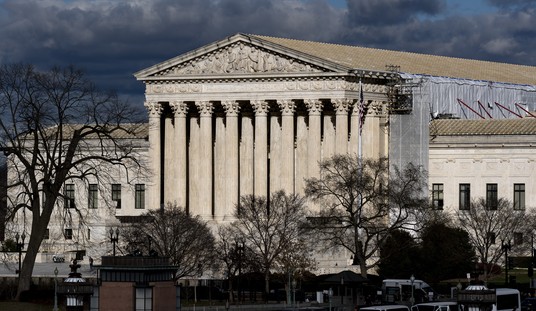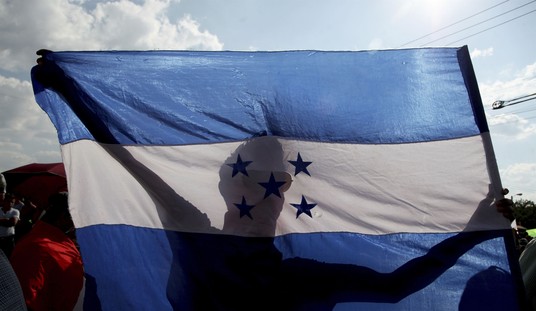Environmentalists aren’t ones to let a good crisis go to waste. Colorado is burning, and as we might all infer from the vociferous insistence of the green lobby, there are few ecological or weather-related disasters that we shouldn’t blame on climate change in some form or another.
Colorado and U.S. Forest Service firefighters are battling the state’s most destructive wildfires ever. Lightning and suspected arson ignited them four weeks ago, but scientists and federal officials say the table was set by a culprit that will probably contribute to bigger and more frequent wildfires for years to come: climate change. …
“We’ve had record fires in 10 states in the last decade, most of them in the West,” said Agriculture Department Undersecretary Harris Sherman, who oversees the Forest Service. …
A study published last monthin Ecosphere, a peer-reviewed journal of the Ecological Society of America, projected that most of North America and much of Europe will witness a jump in the frequency of wildfires by the end of the century, mostly because of increasing temperatures. …
Scientists say they do not have the data to link climate change to Colorado’s decreased snow and rain. But climate change has been linked to warmer temperatures that cause snow to melt earlier and rain to evaporate faster, parching the land, contributing to drought and drying out the vegetation that can fuel fires, said John Nielsen-Gammon, Texas’s state climatologist.
I completely agree with the basic premise of this article — Colorado’s table was set for a monster fire (indeed, much of the West is just a veritable tinderbox waiting to blow). And for the zillionth time, nobody is denying that climate change exists and is happening — I merely find ample reason to not take at face value the politically-motivated auspices of the scientific community in reporting the extent of humanity’s impact and the immediacy of the existential threat. The world has never been a stable place, having gone through periods of warmth as well as massive ice ages, and I find it difficult to believe we’re any more or less close to imminent catastrophe than we’ve ever been before.
It may very well be true that a warming planet is a contributing factor to the arid West’s parched forests and helping to spark wildfires — but just hold on there a darn minute. Let’s not be too hasty to skip over the decades of federal mismanagement and collective ownership that perpetuated absolutely terrible fire-suppression policies that led to overly dry and dense forests that strain the water supply — and nor should we forget the environmentalists who actively lobbied for those policies. If you’re into being a true, knowledgeable conservationist and not just a mindless eco-trendy green lemming, I highly recommend reading this entire piece at PERC:
The extraordinarily difficult job of balancing these competing demands is precisely the sort of thing that bureaucracies are bad at handling. As Malcolm Gladwell notes, these kinds of complex problems are not puzzles (which more information and better education can help solve), but mysteries (in which more information and better education tends to confuse). In the late-1980s, for instance, timber harvesting off national forest land came to a nearly complete halt as a result of court injunctions precipitated in the Pacific Northwest. Litigation by environmentally conscious lobbying groups, specifically over concerns of habitat destruction for endangered species, made large-scale timber harvest a thing of the past. Grazing permits likewise encountered a dramatic decline for similar reasons. Combined with an aggressive thirty-year campaign of actively putting out all fires (is there any more iconic mascot than Smoky the Bear?), these actions led predictably to a dramatic increase in forest-density and ground cover.
Forest density and ground cover is called “habitat” by the green contingent, “fuel-load” by their brown compatriots. And, of course, there is an element of truth in each view, often masking personal preferences and economic agendas. But the point is this: the kind of see-sawing policy shifts which encouraged dramatic, perhaps unsustainable, increases in extractive uses in the early 1980s was followed by dramatic, perhaps unconscionable, reductions in these uses a decade later. These market-insulated policy shifts were not based on good information (which markets are extraordinarily good at projecting), but on politics and the relative power of lobbying those in control. The short-term increases in forest habitat resulting from reduced extraction charged the pan for the tremendous blazes we have encountered in the past decade.
Isn’t it funny how bureaucracies can start off with the very best of intentions, but in the long run, end up bringing about the very results they were trying to prevent? The federal government owns almost a third of the surface area of the United States, and are loathe to sell or lease that land to private uses that would contribute to its healthfulness. Instead, they attempt to steward the land using their own limited knowledge and resources, leading to the type of calamitous environmental degradation we’re seeing in Colorado right now.
The WaPo article does go on to briefly acknowledge the role of environmentalists and the Forest Service in the increasing frequency and intensity of wildfires, and even the federal government is starting to wake up and realize exactly what their fire suppression policies have done for the country. But until we fundamentally change how we look at conserving America’s natural resources and begin looking to individuals/private property/free markets to solve environmental problems instead of common ownership/central management, we’re going to be stuck with more of the same. The federal government just isn’t an agile problem-solver, no matter how much the greenies try to pinpoint the blame for everything on climate change — and the beautiful American wilderness is what we stand to lose.








Join the conversation as a VIP Member